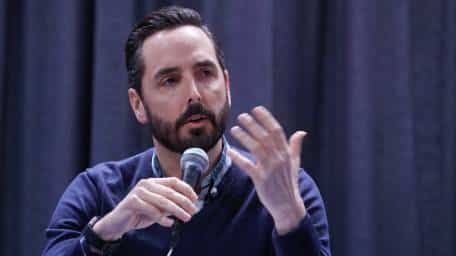At some point, many people in the U.S. decided that all kids should go to college. I’m not sure how, when or why that happened, but it did. Those not heading to college were soon looked at as something less and continue to be held in a lower regard.
Their unique skills, talents, dedication — anything that makes young people special — has been overlooked for decades now, their potential to contribute to our society stifled by the rest of us. That’s because we have been fed an unhealthy narrative that leads us to believe if a student graduates high school and pursues the trades or the military they are destined for mediocrity.
Tell that to my plumber and electrician who have made thousands of dollars in my home over the past two decades and are some of the happiest and most fulfilled people I know. When my wife, Erin, asks me to fix something in the house (actually she stopped doing that years ago), she knows I’ll proceed to break everything in and outside the house…and then I move onto breaking something on my car.
I’m in constant awe of the talented and skilled professionals who can put everything back together again. But these are the survivors. What about all those young people who lost confidence in themselves and their abilities, simply because they weren’t heading to college? Maybe they left a happy, fulfilling life on the table.
Anyone who knows me understands that I’m pro-education. But education in all forms. The best path for most people should never be the most expensive, or what’s trending during any given time or place.
As Mike Rowe from the superb old show Dirty Jobs once said, “As long as the government is in the business of lending billions of dollars to college students, I’ll continue to challenge the idea that college is the only place to get a worthwhile education.” Amen to that, Mike Rowe.
An article in The Atlantic from 2018, states: Today, the U.S. spends more on college than almost any other country, according to the 2018 Education at a Glance report, released by the Organization for Economic Cooperation and Development (OECD). All told, including the contributions of individual families and the government (in the form of student loans, grants, and other assistance), Americans spend about $30,000 per student a year—nearly twice as much as the average developed country.
“The U.S. is in a class of its own,” says Andreas Schleicher, the director for education and skills at the OECD. He does not mean this as a compliment. “Spending per student is exorbitant, and it has virtually no relationship to the value that students could possibly get in exchange.” That was over four years ago, and it’s even worse now. It’s that unyielding message of “college for everyone” at work. The consequences are right in front of our faces.
As a nation we have less vocational classes in our high schools, over $1 trillion (with a T) of student loans and millions of jobs available that nobody is trained to perform in. Millions of good-paying jobs are opening in the trades and in many cases, they pay better than what the average college graduate makes. Our nation is grappling with a skilled labor shortage where thousands and thousands of blue-collar jobs go unfilled because people lack the training or interest — often one has to do with the other.
It’s time we celebrate the students who attend BOCES vocational training, just as we would students who are pursuing rigorous Advanced Placement or International Baccalaureate classes. It’s time we eradicate the negative social stigma of a young adult pursuing the trades as someone who should only do it if “college doesn’t work out.”
In a society that holds a financial analyst in higher regard than a mechanic, schools must begin to integrate Career and Technical Education into the school culture, into their school curriculum and into their school budgets. Let’s provide multiple pathways for all students, so if a student wants to attend a trade school and then pursue a blue-collar job, they are celebrated and valued as our college graduates. Let them be encouraged by their parents, teachers, neighbors, and peers.
The baby-boom workers are retiring and leaving lots of openings for our millennials. Let’s make sure we can support them the best we can.




